On September 17, at a press event at its manufacture and headquarters in Plan-les-Ouates on the outskirts of Geneva, Vacheron Constantin unveiled the most complicated watch ever made. The double-dial portable mechanical timepiece has a total of 57 complications, by Vacheron’s count. Several of the complications are world firsts. (All 57 complications are listed at the end of this story.)
The watch, which Vacheron Constantin calls the Grand Oeuvre (Reference 57260), was manufactured by a team of three master watchmakers and took eight years to complete. It was commissioned by a prominent watch collector and created to mark this year’s 260th anniversary of the founding of the company in Geneva.
The watch (whose dimensions are 98-mm in diameter and 50.55 mm thick) boasts 960 grams of white gold in its case and is loaded with notable technical features. It displays three different perpetual calendar systems: a Gregorian perpetual calendar, a Hebraic perpetual calendar, and the ISO 8601 business calendar. The user is able to switch from the Gregorian to the ISO business calendar. It has a three-column-wheel 12-hour chronograph, three-axis armillary tourbillon, a 12-hour second-time-zone indicator with day and night indications, and a world timer with 24 time zones.
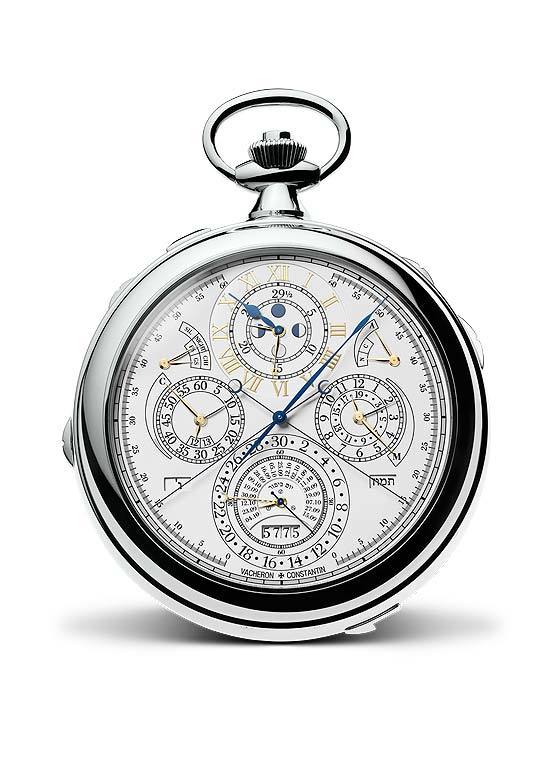
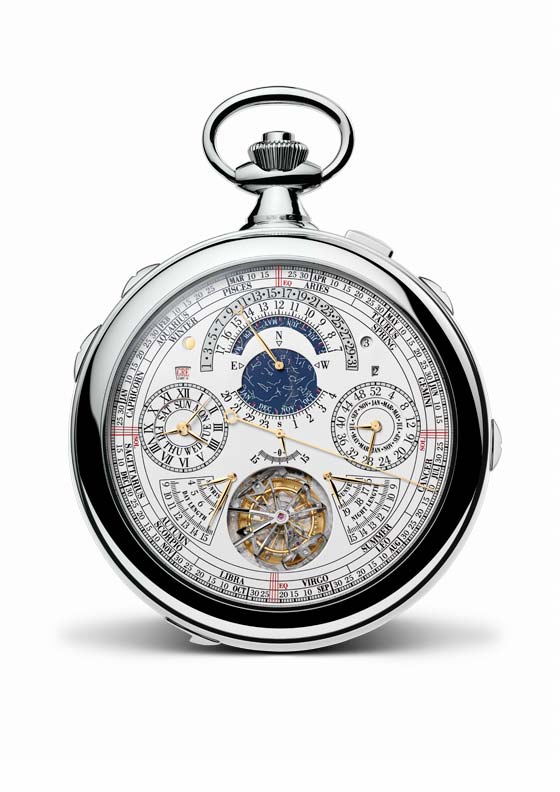
It has an astronomical calendar with indications for seasons, equinoxes, solstices, and zodiac signs. Plus a sky chart, sidereal time in hours and minutes, equation of time, hours of sunrise and sunset, and length of day and night.
It has a moon-phase and moon-age indicator. It has six alarm functions and Westminster carillon striking including a minute repeater. And much more. (The movement, incidentally, is 71 mm in diameter and 36 mm thick and comprises an astonishing 2,800 components.)
The following are among the watch’s world firsts:
• Hebraic perpetual calendar: The Hebraic perpetual calendar works on a 19-year cycle quite different from the Gregorian calendar. The watch has indications for the Hebrew day, month, date, year, decade, and century, as well as the number of months (12 or 13) in the calendar year. It also displays the 19-year Metonic cycle with its Golden Number and the date of Yom Kippur.
“The making of a complete functioning mechanical Hebraic perpetual calendar in a watch has been impossible until now,” VC said in a statement released today. “It had to be calculated, designed and developed from scratch. This achievement cannot be overstated as an example of contemporary watchmaking genius.”
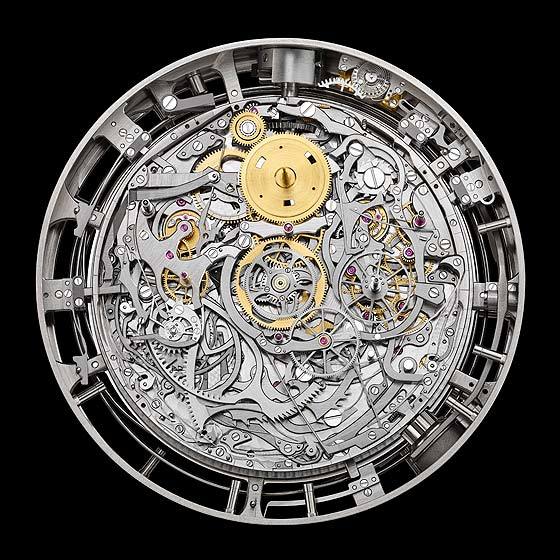
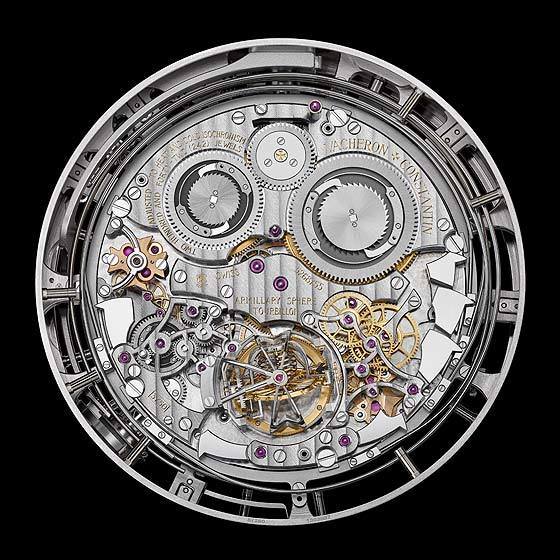
• Double retrograde rattrapante chronograph: The Grand Oeuvre is the first watch to use two separate retrograde indicators for the rattrapante function. Vacheron calls the construction a “detached” split-seconds chronograph: the two rattrapante hands operate on separate scales shown on opposite sides of the dial. The hands work in unison and from the same axis, but they never actually meet, as in other split-seconds chronographs. To achieve this, Vacheron’s watchmakers invented a new chronograph mechanism.
• Second time zone with separate day and night indication: The second time zone subdial is on the watch’s back dial in the 9 o’clock position. Above it is a trapezoid-shaped window with name of a city in a second time zone and its time deviation from Greenwich Mean Time. Above that window, in the 10 o’clock position, is a round window with a light orb indicating daylight hours and dark orb for night time hours. Vacheron says “This is the first new system developed since Louis Cottier’s well-known world-time system with 24-hour indication invented about 1935 and is therefore of major significance.”
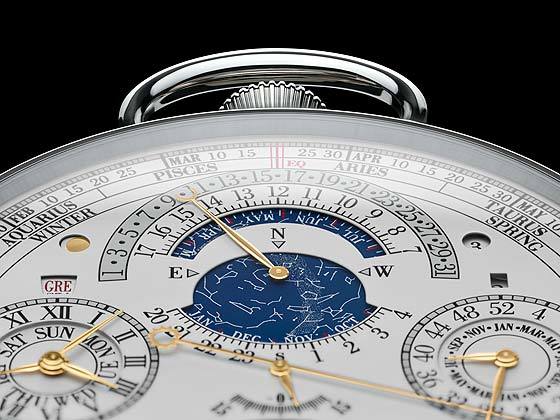
Given the extraordinary number of complications, the watch’s two dials are an organized riot of subdials, scales, windows, and retrograde displays. In examining the watch today, I counted a total of 31 different hands, 19 on the front and 12 on the back. Control of all the functions is done through the crown and eight different pushers, slides and selectors built into the case. The crown at the top of the case, like everything about the watch, is complicated. It has a winding stem in three positions. Position 1 rewinds the sonnerie movement barrels. Position 2 corrects the sky chart and sets the alarms. Position 3 sets the time. A window built into the case next to the crown shows which position the crown is in. In addition, the crown has what Vacheron calls “a secret bow”: when turned slightly, a secret alarm mechanism pops out. Furthermore, the chronograph push-piece is set into the crown.
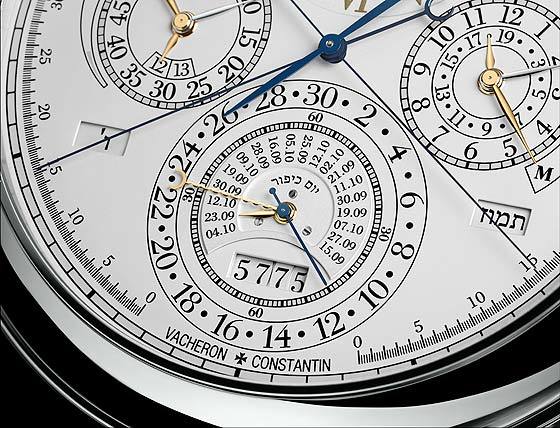
Vacheron Constantin is understandably proud of its record-setting new watch. “The research and skills developed during its construction can be considered the greatest contribution to advancement of mechanical watchmaking since the 1920s,” the company said.
What follows is Vacheron Constantin’s list of the watch’s complications.
GRAND OEUVRE COMPLICATIONS
Time Functions
- Regulator-type hours, minutes and seconds for solar meantime
- Visible spherical armillary tourbillon regulator with spherical balance spring
- Three-axis tourbillon
- 12-hour second time zone hours and minutes
- Indication for 24 world cities for world-time
- Day and night indication for the 12-hour world-time
Perpetual Calendar Functions
- Gregorian perpetual calendar
- Gregorian days of the week
- Gregorian months
- Gregorian retrograde date
- Leap-year indication and four year cycle
- Number of the day of the week (ISO 8601 calendar)
- Indication for the number of the week within the year (ISO 8601 calendar)
Hebraic Perpetual Calendar Functions
- Hebraic perpetual calendar with 19-year cycle
- Hebrew name of the day
- Hebrew name of the month
- Hebrew date indication
- Hebrew secular calendar
- Hebrew century, decade and year
- Indication for the number of months in the Hebraic calendar year (12 or 13 months)
- Indication for the Golden Number with 19-year cycle
Functions of the Astronomic Calendar
- Indications for the seasons, equinoxes, solstices and signs of the zodiac with “sun” hand
- The sky chart (calibrated for the city of the owner)
- Sidereal time hours
- Sidereal time minutes
- Hours of sunrise (calibrated for the city of the owner)
- Hours of sunset (calibrated for the city of the owner)
- Equation of time
- Length of the day (calibrated for the city of the owner)
- Length of the night (calibrated for the city of the owner)
Lunar Calendar Function
- Phases and age of the moon, one correction every 1027 years
Religious Calendar Function
32. Indication for the date of Yom Kippur
Functions of the 3 column-wheel Chronograph
- Retrograde fifths of a second chronograph – 1 column wheel
- Retrograde fifths of a second rattrapante chronograph – 1 column wheel
- 12-hour counter – 1 column wheel
- 60-minute counter
Alarm Functions
- Alarm with single gong and hammer striking
- Alarm strike / silence indicator
- Choice of normal alarm or carillon striking alarm indicator
- Alarm mechanism coupled to the carillon striking mechanism
- Alarm striking with choice of grande or petite sonnerie
- Alarm power-reserve indication
Westminster Carillon Striking Functions
- Carillon Westminster chiming with 5 gongs and 5 hammers
- Grande sonnerie passing strike
- Petite sonnerie passing strike
- Minute repeating
- Night silence feature (between 22.00 and 08.00 hours – hours chosen by the client)
- System to disengage the striking barrel when fully wound
- Indication for grande or petite sonnerie modes
- Indication for silence / striking / night modes
Further functions
- Power-reserve indication for the going train
- Power-reserve indication for the striking train
- Winding crown position indicator
- Locking mechanism for the striking
- Winding system for the double barrels
- Hand-setting system with two positions and two directions
- Concealed flush-fit winding crown for the alarm mechanism
Additional specs:
Dimensions of watch: 98 mm diameter, 50.55 mm thick.

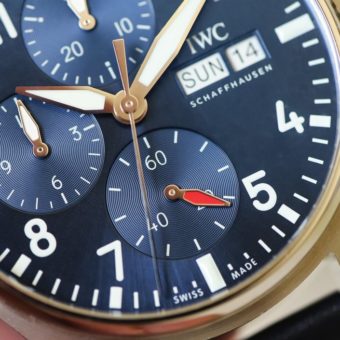
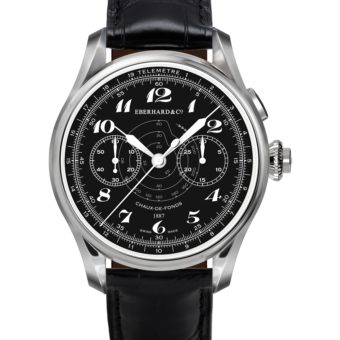
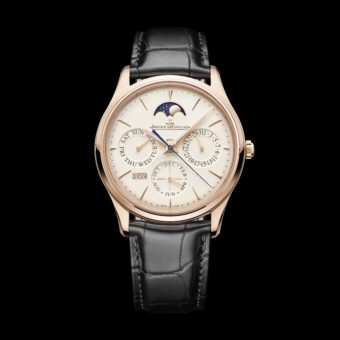
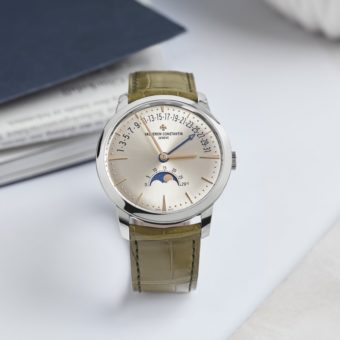

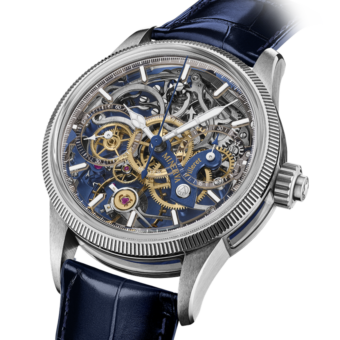
The point of impractical complications is first, to beat the competition, whatever that is, and the second and most important: marketing. In today´s world of increasing advances in horology, and I mean not creation of new complications but the way to achieve them, many watch manufactures can enter the game of haute horologie. So how to call the attention of both aficionados and of people who couldn´t care less, by coming up with a “world’s best” or a “world’s first” or, in this case, a “the world most”.
this is not a pocket watch, it is a desk watch!! so a new record for a desk watch.
57 complications, simply awesome!
But then I am sure that the owner will never carry this ultra-heavyweight (almost 1 Kg) watch with him.
Amazing piece of engineering but by no stretch of the imagination is this a watch. With dimensions of 100mm x 50mm and over a kilo in weight this is not “a small timepiece” as defined in various dictionaries.
Have to agree. What’s the point of mega complications in a totally impractical package. Is it just an exercise to get into the Guinness book?